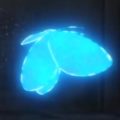Needs Some Saving from Itself- D.Gray Man Hallow

There were a couple of series that fell under my criteria of “needs more episodes” in the past, though a few of those requests have since been filled (Initial D, for instance) or are in the process of being filled (Ao no Exorcist). It could take years, but reviving an old series to finish up the manga is rare and very welcome. Finish what you start, otherwise don’t start at all. I’m still waiting (probably in vain) for a proper ending to “Rurouni Kenshin,” but hearing that there were going to be more episodes for “D.Gray Man” gave me mixed feelings. See, the manga is still ongoing, having been delayed multiple times and new content comes out at a glacially slow pace due to the mangaka’s medical conditions. This is an older series now, with the fandom having moved on for the most part, but as of now, the story has many things in limbo and many of the main characters have been pushed aside to secondary status. How exactly would the anime, known as “D.Gray Man Hallow,” proceed?
It’s been a decade since “D.Gray Man” began gracing television screens in Japan, and at least 5 years since it aired, so naturally, asking the original voice actors to reprise their roles was a tall order. Allen’s new voice actor is able to pull off the role to a certain extent though sounds less rich and slightly younger, but Lavi’s and Lenalee’s new voice actors are much less successful, their younger-sounding voices a bad fit with their older appearance. There is a slight timebreak transitioning from the main series to “Hallow,” but jumping back in is a snap, the characters still retaining their original identities and personalities and following the manga to a T. Score one for proper writing, though the manga at this point in time began to dilute the characters’ personalities as the story begins to focuses more on Kanda (whose backstory is wonderfully portrayed in these episodes), Allen, the Noah, and upper management of the Black Order. The animation and drawings in “Hallow” are much smoother than its predecessor, with sharp edges rounded off and noticeably, characters’ eyes being much smaller than before. There is also noticeably less animation than before, with extremely short fight scenes, much fewer interactions amongst parties in battle, and more emphasis on plotline progression. The use of flashy moves has been reduced significantly, and when protagonists activate their Innocence, there’s no more sense of grandeur, as if the characters are no longer proud of their Innocence and treating it as a sort of appliance. It’s not as if the drawings, animation, and battles are terrible, but it’s more like the quality was made to be “sufficient” rather than try to line up with the predecessor anime. One thing that is welcome, however, is the much more varied color palate. There was always a sense that the original anime was mostly done in black and white, with just splashes of very matte colors thrown in for variance and bright flashes of light done in white as well. In “Hallow,” there are large swathes of reds, purples, and yellows, all in much brighter and more vibrant tones versus the earthiness from its predecessor. While the larger variety of colors and slightly more vibrant tones is welcome, the same can’t be said for the change in mood from being constantly cloudy and slightly ominous to one that is brighter with a faux sense of happiness.

I say faux sense of happiness because this is not a happy anime at all, with the feeling amplified even moreso than its predecessor, since the Millennium Earl has stepped up his game with much more powerful Akuma to attack with, and the Noah have revived themselves as well. Meanwhile, the Black Order is in disarray and hamstrung by overbearing upper management in the form of Inspector Malcolm Rouvelier, who begins sowing the seeds of doubt as to who Allen Walker is truly loyal to. See, the Black Order is also shown to be less than completely ethical, as “Hallow” reveals that the organization has performed scientific experiments using the Akuma and other human bodies in the past in order to increase their fighting ranks. Of course, this doesn’t always go flawlessly, (see the section on Kanda’s backstory) which is something that the Earl calls out the Order for. The lines between Noah, Akuma, and Exorcist start becoming heavily blurred in “Hallow,” as new concepts and classes of character such as the Crow are thrown out often and characters begin hybridizing. The concepts are thoroughly explained, thankfully, but with so many being introduced and with “Hallow” being such a short series, more is needed to ensure that the implications and consequences of this hybridization marinate all the way through.

The reason for the short series is the fact that the anime follows the manga to a T, which serves as a blessing and a curse. Due to the mangaka’s medical conditions, the anime can only proceed so far before catching up to the manga. The content’s slow release comes at a bad time- when the story begins to deviate from “D.Gray Man’s” original story of finding the “Heart” and instead transitions into focusing on the Order’s less than glamorous past and Allen’s evolving role as an Exorcist. As a result, expect a lot of time shifts as the story begins to flesh out what had taken place before “D.Gray Man’s” main plotline, which is done much more effectively in the anime. It is unknown whether this is a detour or tangent that the mangaka has made, but the anime does a much better job at portraying this shift in focus than the manga, as one is more easily able to keep track of all the new concepts and subplots being thrown out in such a short period of time. Characters, however, are physically split up and are more mentally damaged than ever before, and unfortunately, both Lavi and Lenalee have been demoted to serve as side characters, with promoted character Chaoji and new character Timothy (not to be confused with Timcampy) having had insufficient time to be proper substitutes. The plot is at least stable and linear, but with the limited content, it must move quite quickly to try and stretch things out, and as a result, the ending comes on harshly and ungracefully lands with a giant, clomping thud.

So where does that leave “Hallow?” Well, as a sequel, it will keep the fans satisfied, since it accomplishes the important task of progressing the story and keeping it intact. The anime is also more successful than the manga at portraying and explaining the story, but beyond that, most aspects of “Hallow” fall short of its predecessor. I’ll accept the differences in voice acting as inevitable, and I’ll slightly forgive the anime pushing aside Lavi and Lenalee as adherence to the manga. However, the drawings and animation are a downgrade compared to its predecessor as they are a less appropriate “fit” to the mood being portrayed. The characters’ personalities all have a whiff of actors trying to portray the characters and hoping to live up to their past successes rather than the original characters themselves continuing on with the story. The story itself at this point in the manga feels boggy and lethargic, even though many major events take place. It’s not a terrible anime, but it does not live up to its predecessor’s high standards. Watch it for progress, but keep your expectations in check.





